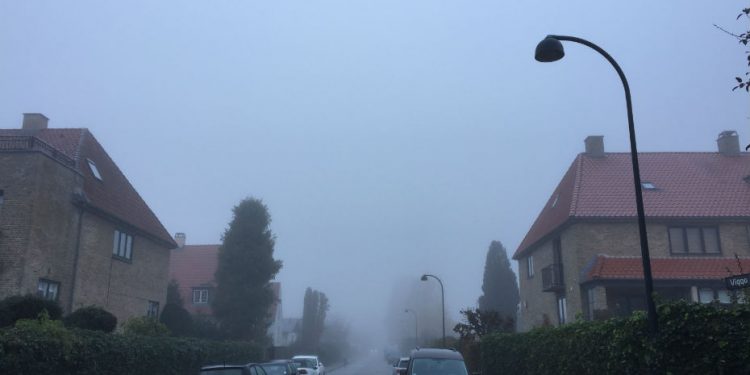Are you taking your vitamin D ?

In Denmark, the cold season can be a real challenge. Not only are the dark months hard to get through; the lack of sun may impact directly on people’s health, as our expat writer found out.
The article continues below.
By Evmorfia Tsakiri Picture: Hisham Ammar
“Are you taking your vitamin D”?
This is one of the most frequent questions I heard during my first Danish winter.
The truth is I thought I would never ever face a problem with vitamin D deficiency; I come from a Mediterranean country and spend a lot of time there, especially during the summer months.
Moreover, I always prefer following a healthy diet, rich in fruit, fish and vegetables, where I get my vitamin supply through my diet.
However, as I found out, living in the long and dark Danish winter means that all the above are not enough to supply the body with the necessary amount of vitamin D.
I realized it when I started noticing some weird changes to my body. I started feeling intense fatigue and a lot of pain in my bones and muscles.
When I visited my doctor, she immediately asked me; “Are you taking your vitamin D?” My answer was “No”.
So, she urged me to have the necessary blood tests in order to check my vitamin D level.
After getting the results, I found out that I had vitamin D deficiency, so my doctor recommended the appropriate supplement of vitamin D.
The article continues below.
Vitamin D: a precious treasure
All research shows that vitamin D is one of the most important vitamins for our body. It is a fat-soluble vitamin, which is synthesized in our body mainly through the effect of the ultraviolet sunlight on our skin and includes D-1, D-2 and D-3 vitamins.
It is considered a precious ally in the proper development of our bones and the health of our skeleton.
Scientific studies highlight the vital role of vitamin D and its contribution to the much-needed functioning of our immune system, the control of glucose, its importance in acting against some forms of cancers and, not least, in reducing the risk of depression.
The article continues below.
The “sunlight” vitamin
It has justifiably acquired the title as the sunlight vitamin, since the main source of vitamin D intake is from the sun.
In order for our body to synthesize vitamin D, it must be exposed to the sun for about 15-20 minutes on a daily basis (for some this may not be enough, and it can depend on other factors such as a person’s age and skin colour).
This is certainly a challenge when you live in Denmark and go through the dark and short winter days.
From October to April (and sometimes longer), the sun in Denmark is non-existent or too weak for our body to produce vitamin D.
This means that the level of vitamin D that can normally be acquired through sunlight is too low, making the need for extra vitamin D greater during the wintertime, compared to the rest of the year.
The lack of sun during the winter period, combined with an increase in the number of people who have very low levels of vitamin D, has made researchers point out that we need to consume more vitamin D.
In Denmark the nutritional recommendation is that adults and children from the age of 4 should take between 5 to 10 micrograms of vitamin D per day from October to April.
Risk groups are to take 10 micrograms all year : children aged 0 to 4, pregnant women, dark skinned residents or people using headwear and elderly above 70 20 micrograms all year.
You can find the Danish Health Boards recommendations here.(Danish only)
Read also our article on the Daylight LAMP to help you get through the dark hours.
The article continues below.
It is better to take care in advance in order to avoid vitamin D dropping to very low levels, since if the levels become low, it can take some time to get these levels back up again.
If you notice any symptoms or have any suspicions of having lack of vitamin D, you should contact your GP and make an appointment.
The GP will advise you on the tests you have to do and, if you really have a vitamin D deficiency, will recommend the appropriate supplement to take and ensure a follow up to ensure these levels are increasing .
Unfortunately, most surveys show that it is really difficult to acquire the daily requirement for vitamin D through diet only.
The latest available study (Danskernes Kostvaner 2011-2015) showed that many Danes’ vitamin D intake through their diet was much lower than the recommended 10 micrograms a day, with about one third of the population’s intake through their diet at about 3.3 micrograms and a general average of the total population at about 4.8 micrograms.
In this research, accessing the effect of intake through sunlight was not measured; however, it does show how difficult it is to obtain the needed levels of vitamin D through the diet.
There are many different vitamin D supplements available, and you can find them everywhere, even in supermarkets.
Undoubtedly, winter in Denmark is a big challenge especially for the body but being properly prepared will let you enjoy it!
The article continues below.
Symptoms of vitamin D deficiency: Muscle pains, difficulty in getting up from a chair or up the stairs, pain in your bones or other parts of the body. A blood test can ascertain if you have a vitamin D insufficiency.
Daily recommend intake of vitamin D: 5 to 10 micrograms during October to April – as set by the Danish Health Board
The main source of vitamin D comes from the sun – and a daily dose of sunlight for 15 to 20 minutes is estimated as enough to reach the daily-recommended dose. During the winter in Denmark, this can be difficult to obtain.
In Denmark no food products are fortified with vitamin D contrary to for instance Sweden, Canada and the US (milk is fortified).
Support our magazine with a contribution of any size
We do not want to put up a pay-wall, so we need your support and if you find our content relevant and worthwhile, we would value any contribution, however big or small, as a token of your appreciation of our efforts.
How to support:
Transfer any contribution to our bank account at: Your Danish Life/ Danish Expat Media Aps
Danske Bank Account number: 3409 11405673
IBAN: DK68 3000 0011 4056 73
or MobilePay to 2144 1224
Message: Support
Sources: videnskab.dk,sciencenordic.com,health.com, Danskernes Kostvaner 2011-2015,Sundhedsstyrelsens kostråd

